 |
Integrated Space and Time Adaptive Chip-Package Thermal Analysis, Version 2 |
 |
|
|
University of Colorado at Boulder and Queen's University | University of Michigan |
|---|---|
| Electrical and Computer Engineering | Electrical Engineering and Computer Science |
| Mr. Nicholas Allec | Mr. Xi Chen |
| Mr. Zyad Hassan | Mr. Zhenyu Gu |
| Ms. Yonghong Yang | Prof. Robert Dick |
| Mr. Changyun Zhu | |
| Prof. Li Shang |
Increasing integrated circuit (IC) power density can result in high temperature, reducing reliability, reducing performance performance, increasing leakage power consumption, and increasing the cost of economical cooling. The use of thermal analysis during early stages of the IC design can enable temperature optimization techniques that would be impractical if thermal analysis were deferred until packaging design. Many methods of integrated circuit thermal analysis do not have sufficient performance and accuracy for use in architectural design.
ISAC2(FATA/ThermalScope) is built on ISAC, a static and dynamic thermal analysis software package. The initial version of ISAC was described here.
ISAC2 improved the time-domain solver in ISAC to achieve higher performance for dynamic thermal analysis while maintaining similar accuracy. ISAC2 replaced the original temperature update function in ISAC with a trapezoidal method based temperature update function. The step size adaptation method in ISAC2 is based on third-order finite divided temperature difference. ISAC2 also adds quiescence detection for shorter simulation time.
ISAC2 consists of a device temperature solver, as well as a chip-package analysis tool. Together, the thermal profile of a chip can be computed down to the device-level, taking into account the nanoscale thermal effects, such as the ballistic phonon effect. In the following, the device solver, and the chip-package analysis tool will be described.
ISAC2 needs the AMD Core Math Library (ACML) to be available. ACML can be downloaded from here.
Acknowledgments: This work was supported in part by the Natural Science and Engineering Research Council under Discovery Grant #388694-01, in part by the National Science Foundation under awards CNS-0347941 and CCF-0702761, and in part by the Semiconductor Research Corporation under Awards 2007-HJ-1593 and 2007-TJ-1589.
Page maintained by Robert Dick.